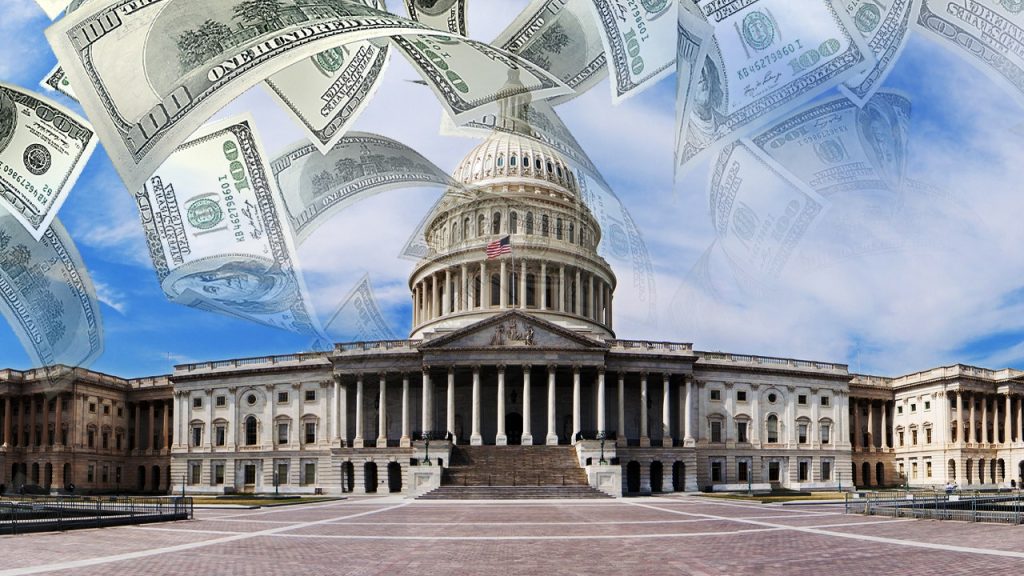The eleventh-hour passage of a stopgap funding bill averted a government shutdown, leaving a trail of reactions and analyses in its wake. President Biden signed the bill into law, extending government funding into March and providing crucial disaster relief and agricultural assistance. The chaotic week on Capitol Hill saw a dramatic shift from a bulky, 1,547-page continuing resolution to a significantly slimmed-down version, ultimately resulting in an 118-page bill. While the bill garnered bipartisan support in both chambers, it also drew criticism and sparked debates about the handling of negotiations and the role of key players.
House Speaker Mike Johnson claimed a “good outcome for the country” and asserted that President-elect Trump was pleased with the result. However, sources suggested Trump’s dissatisfaction stemmed from the bill’s lack of a debt ceiling suspension. Democratic Leader Hakeem Jeffries framed the legislation as a victory against “extreme MAGA Republicans,” highlighting the prevention of a government shutdown and economic disruption. Former Speaker Nancy Pelosi echoed this sentiment, praising Democrats for their resilience against what she termed “Trump-Musk irresponsibility.” The initial disruption of the larger continuing resolution was attributed to objections from Elon Musk and President-elect Trump, adding another layer of complexity to the already tense negotiations.
The Senate’s passage of the bill just after the deadline underscored the urgency of the situation. Majority Leader Chuck Schumer celebrated the avoidance of a shutdown and emphasized the bill’s provisions for disaster relief, agricultural aid, and prevention of harmful cuts. Rep. Nicole Malliotakis expressed satisfaction with the revised, shorter bill, contrasting it with the previous “backroom boondoggle” and positioning it as a fiscally responsible measure. She also anticipated the upcoming Republican “trifecta” delivering on voter expectations under the incoming Trump administration. The streamlined nature of the final bill garnered support from those who viewed the initial, longer version as excessive and laden with unnecessary provisions.
Rep. Mike Lawler questioned President Biden’s apparent lack of involvement in the negotiations, highlighting the unusual dynamic of a lame-duck president seemingly overshadowed by the president-elect. He also pointed to the long-standing practice of using the debt ceiling as political leverage, suggesting Trump’s strategy was to prevent Democrats from wielding it against him. This perspective underscores the strategic maneuvering surrounding the debt ceiling and its potential implications for future political battles. The interplay between the outgoing and incoming administrations created an unusual power vacuum, with the president-elect seemingly driving the agenda.
Beyond the immediate funding crisis, the bill included a provision addressing the long-debated future of the RFK Stadium campus in Washington, D.C. House Oversight Committee Chairman James Comer championed the inclusion of the D.C. Robert F. Kennedy Memorial Stadium Campus Revitalization Act, which grants control of the site to the District of Columbia. He hailed this as a “historic moment” and emphasized the economic benefits of revitalizing the decaying site, while also highlighting the bipartisan cooperation involved. The inclusion of this provision demonstrates the ability to address other legislative priorities even within the context of a time-sensitive funding bill.
The frantic race to avert a government shutdown highlighted the deep divisions and complex political dynamics at play. The eleventh-hour agreement, while preventing immediate crisis, leaves lingering questions about the long-term stability of government funding and the looming debt ceiling issue. The interplay between the outgoing Biden administration and the incoming Trump administration added a unique dimension to the negotiations, with the president-elect playing an unusually prominent role. The reactions from lawmakers across the political spectrum reveal varying perspectives on the efficacy and implications of the stopgap bill, setting the stage for future budget battles and political maneuvering. The inclusion of the RFK Stadium provision underscores the potential for addressing other legislative goals even amidst pressing funding concerns. Overall, the chaotic week serves as a microcosm of the broader political landscape, characterized by partisan tensions, strategic negotiations, and the ever-present threat of government dysfunction.

